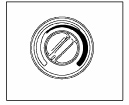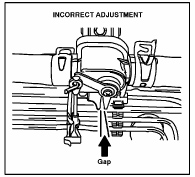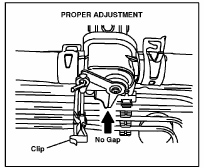Rich Diegle
Senior Automotive Editor
Some 2001-2004 Sequoia and 2000-2004 Tundra vehicles may exhibit a condition where the air conditioning system does not sufficiently cool the cabin. Vehicle owners will notice the problem more often when ambient temperatures exceed 80° F (26.6° C).
Before performance-testing the air conditioning system, check the adjustment of the water control valve cable. Refer to the Repair Procedure for the details.
Repair Procedure
Review safety procedures in ALLDATA Repair before beginning.

1. Turn the temperature control knob to the full cold position.
2. Inspect the clearance between the water control valve lever and the lever stop. If the lever does not contact the lever stop, proceed to step 3.
3. If the lever does not contact the lever stop:
A. Disengage the cable retaining clip.  B. Pull up on the cable sheath until the water control valve lever contacts the lever stop.
B. Pull up on the cable sheath until the water control valve lever contacts the lever stop.
C. Re-fasten the cable retaining clip.
4. Cycle the temperature control knob several times and confirm proper water control valve adjustment.
Written by ALLDATA Senior Automotive Technical Editor, Rich Diegle. Rich is an Advanced Engine Performance Certified, ASE Master Technician with an AA Degree in automotive technology and 23 years of dealership and independent shop experience.
 For additional information, visit www.alldata.com.
For additional information, visit www.alldata.com.











